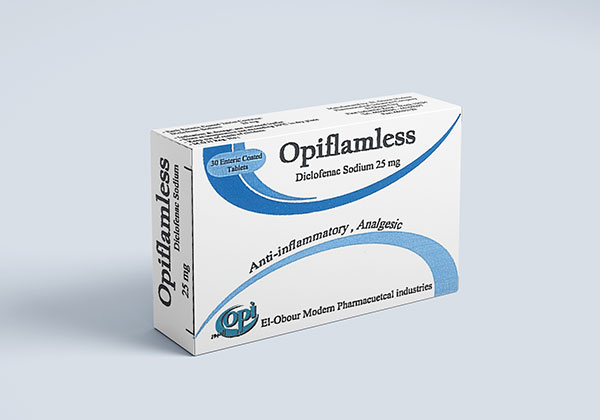Opiflamless
Composition ;
Each Enteric Coated Tablet contains:
Active ingredients: Diclofenac sodium 25 mg
Inactive ingredients: Maize Starch,Lactose Monohydrate,Crosscarmellose sodium,Magnesium Stearate,Opadry OY- 8719 Orange,Cellulose acetate phthalate,Diethyl phthalate,Castor oil
Dosage form : Enteric Coated Tablet
CLINICAL PARTICULARS
1-Therapeutic indications
Adults and Elderly:
Relief of all grades of pain and inflammation in a wide range of conditions, including:
- arthritic conditions: rheumatoid arthritis, osteoarthritis, ankylosing spondylitis, acute gout,
(ii) acute musculo-skeletal disorders such as periarthritis (for example frozen shoulder), tendinitis, tenosynovitis, bursitis,
(iii) other painful conditions resulting from trauma, including fracture, low back pain, sprains, strains, dislocations, orthopaedic, dental and other minor surgery.
Children (aged 1-12 years): Juvenile chronic arthritis (25mg tablet only).
Contraindications
Hypersensitivity to the active substance or any of the excipients.- Active, gastric or intestinal ulcer, bleeding or perforation.
- History of gastrointestinal bleeding or perforation, relating to previous NSAID therapy
- Active, or history of recurrent peptic ulcer/haemorrhage (two or more distinct episodes of proven ulceration or bleeding).
- Last trimester of pregnancy (see Pregnancy and lactation).
- Severe hepatic, renal or cardiac failure (see Special warnings and precautions for use).






